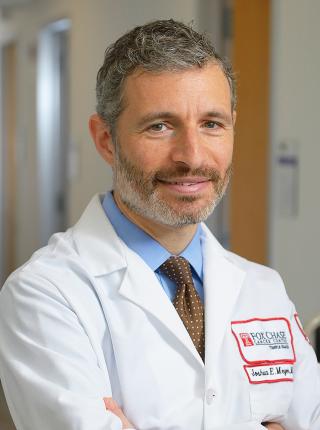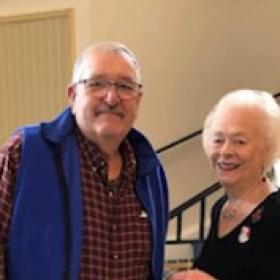Related Articles
00 / 00

Request an Appointment
Vice Chair, Translational Research, Department of Radiation Oncology
Professor, Department of Radiation Oncology
Director of Clinical and Translational Research, GI Service Line
Director, Marvin and Concetta Greenberg Pancreatic Cancer Institute
Neuroendocrine Tumors, Colorectal Cancer, Liver, Gall Bladder & Bile Duct Cancer, Stomach (Gastric) Cancer, Esophageal Cancer, Pancreatic Cancer, Endobronchial Disease
Stereotactic Body Radiation Therapy (SBRT), Intensity Modulated Radiation Therapy (IMRT), Image-Guided Radiation Therapy (IGRT), Radioembolization, MR-guided Focused Ultrasound, Re-irradiation, Pulsed Low Dose Rate (PLDR) radiation, Brachytherapy, Anal Cancer
As technologies and treatments continue to advance, there are more and more options in the details of how each cancer patient is treated. I work with my colleagues in other disciplines to define the most appropriate treatment for each individual patient. For each individual I am treating with radiation, I make a concerted effort to survey the landscape of potential treatment choices that I am able to bring to a particular patient’s care to ensure that the most effective, precise and targeted approach is being used in every situation. This allows patients to get the maximum amount of benefit from treatment with as small a risk of complications as possible.

My cancer journey began in late 2021 when I began experiencing feelings of sickness, most often after eating. One night in February 2022, however, it became clear food was not the issue.
I’m the kind of guy who can sleep anytime, anywhere, so when the pain in my abdomen got so bad that I couldn’t sleep, I finally told my wife I needed to go to the ER. The doctors there did some testing and scans, but all they found was an infection, so they gave me an IV and antibiotics. After a few days, when I felt better, they sent me home.

In January 2022, I listened to my body, and it may have saved my life. I initially went to the doctor because I had hemorrhoids that had been acting up for about a week. Not only was an over-the-counter medication not working, but I had also noticed a change in the color of my stool. Together, these were red flags that something wasn’t right.

In 2021, I started having pain in my left leg. I visited my family doctor, and at first we thought it might be a deep vein thrombosis. When we ruled that out, I saw a vascular doctor in case it might be varicose veins. That doctor had me get an MRI, and after those results came back, I had to get a biopsy. That’s when the doctors confirmed that I had a stage IV tumor in my leg.

I’m 62 and I live in Bristol, Pa., with my wife Maryann. Between the two of us, we have four children and eight grandchildren (with another on the way). I also have a large extended family, and I work full time as a contractor. Needless to say, I’m a pretty busy guy!
My interests are in clinical research for gastrointestinal cancers. This includes the new application of radiation technology to increase surgical resectability and cure rates. It also includes outcomes work to determine which management strategies are the most effective for these patients.